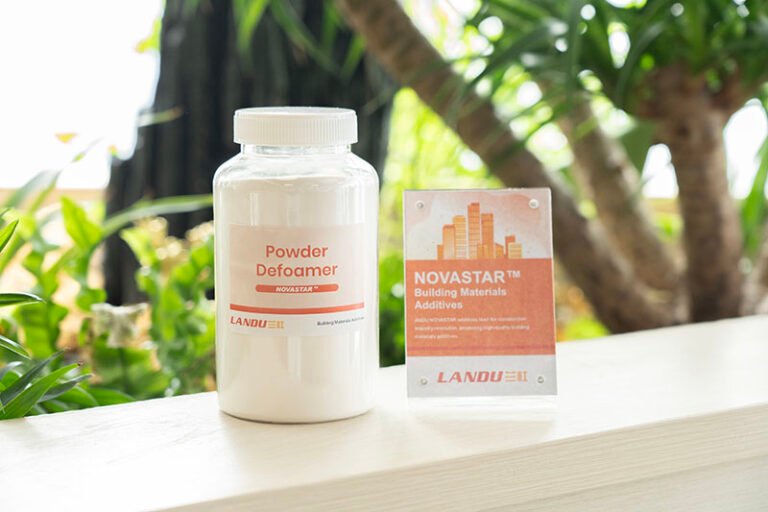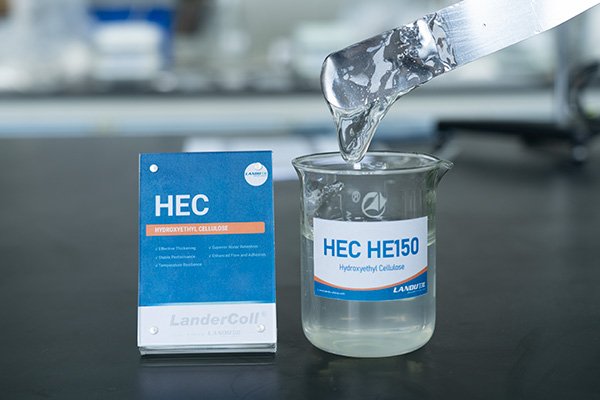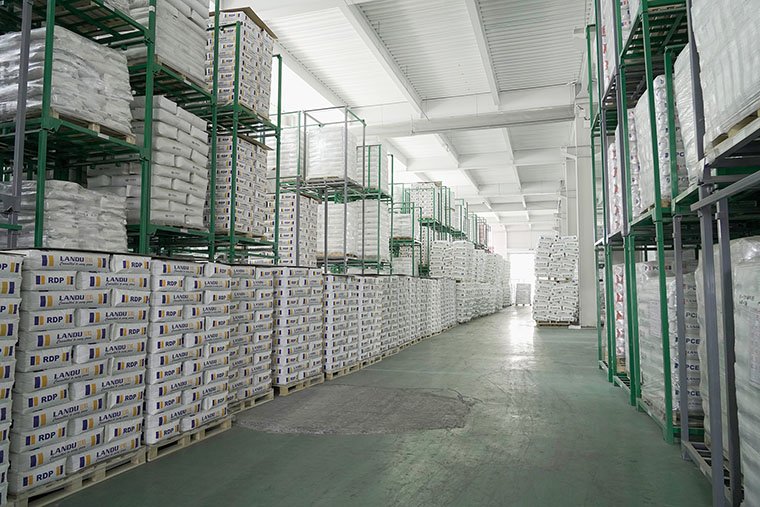
In the vast landscape of modern materials science, few substances bridge the gap between natural origins and industrial innovation as seamlessly as hydroxyethyl cellulose (HEC). Derived from cellulose—the abundant organic polymer found in plant cell walls—this modified compound has evolved into a cornerstone of countless products and processes. But what exactly makes HEC so indispensable? At its essence, HEC is a non-ionic, water-soluble ether produced by reacting alkali-treated cellulose with ethylene oxide. This chemical transformation yields a fine, white to off-white powder that’s tasteless, odorless, and remarkably versatile. Unlike its unmodified cellulose parent, which is insoluble in water, HEC dissolves readily to form clear, viscous solutions or gels, adapting to a wide array of environments.
Picture HEC as a molecular architect: it builds structures within liquids, controlling flow, texture, and stability. Its properties stem from a carefully engineered structure where hydroxyethyl groups are attached to the cellulose backbone, enhancing solubility and functionality. Available in various grades—differentiated by molecular weight, substitution degree, and particle size—HEC can be tailored for specific needs. Low-molecular-weight variants offer quick dissolution and mild thickening, while high-molecular-weight ones provide robust gelling and film-forming capabilities. This adaptability, combined with its biodegradability and non-toxic nature, positions HEC as a sustainable alternative to synthetic polymers in an era increasingly focused on eco-friendly solutions.
As we delve deeper, it’s worth noting that HEC’s market is booming. According to recent industry analyses (as of mid-2025), the global hydroxyethyl cellulose sector is on track to exceed USD 1.1 billion by 2032, fueled by expansions in personal care, construction, and pharmaceuticals. This growth underscores HEC’s role not just as a functional additive but as a driver of innovation across industries. In the sections that follow, we’ll explore its key properties in greater detail before expanding on its uses, complete with practical examples and real-world application


To appreciate HEC’s versatility, we must first unpack its core attributes. Solubility stands out as a primary strength: HEC disperses effortlessly in both cold and hot water, forming transparent solutions that resist precipitation even under varying pH levels or in the presence of electrolytes. This makes it ideal for formulations where clarity and stability are paramount. Rheologically, HEC acts as a modifier, imparting pseudoplastic behavior—meaning solutions thin under shear (like stirring) but regain viscosity at rest. Imagine squeezing toothpaste from a tube: it flows easily when pressured but holds its shape on the brush.
Stability is another hallmark. HEC withstands extreme conditions, from high salinity to broad temperature ranges, without degrading. It’s compatible with surfactants, salts, and other polymers, minimizing unwanted interactions. From a safety perspective, extensive toxicological data confirm its low risk; it’s non-irritating to skin and eyes, with no evidence of carcinogenicity or mutagenicity. In pharmaceutical contexts, it’s classified as Generally Recognized as Safe (GRAS) by regulatory bodies. Environmentally, HEC biodegrades via microbial action, aligning with green chemistry principles. However, challenges like potential lumping during mixing are addressed in modern “treated” grades, which hydrate smoothly.
These properties aren’t abstract—they translate directly into practical benefits, as we’ll see in the expanded discussion of HEC’s applications below. By examining specific sectors, we can uncover how this unassuming powder revolutionizes products and processes.
One of HEC’s most prominent arenas is personal care, where it enhances the sensory experience and efficacy of everyday items. As a thickener and stabilizer, HEC increases viscosity without altering a product’s color, scent, or pH, ensuring a luxurious feel. In shampoos and conditioners, for instance, it creates a creamy lather that clings to hair, improving cleansing and conditioning. Consider a popular brand like Head & Shoulders: HEC helps suspend active ingredients like zinc pyrithione, preventing separation and ensuring even distribution during use.
Body washes and shower gels benefit similarly. HEC’s ability to form stable emulsions means these products maintain their gel-like consistency, resisting dilution under running water. An example is Dove’s Nourishing Body Wash, where HEC acts as a rheology modifier, providing a silky glide that enhances user satisfaction. In lotions and creams, it serves as a humectant and film-former, locking in moisture while preventing phase separation. Take Olay Regenerist Moisturizer: here, HEC stabilizes hyaluronic acid and peptides, creating a smooth, non-greasy texture that absorbs quickly.
Toothpastes represent another key application. HEC binds abrasives and flavors, ensuring the paste extrudes smoothly from the tube without syneresis (liquid separation). Colgate Total, for example, uses HEC to maintain its thick, paste-like form, which aids in plaque removal and freshens breath effectively. Beyond these, HEC appears in soaps, where it boosts foam stability, and in water-based personal lubricants like K-Y Jelly, where it provides a natural, slippery feel without irritation.
In cosmetics, HEC’s role extends to makeup and skincare. It’s a staple in mascaras and eyeliners for its film-forming properties, creating smudge-resistant layers. For instance, Maybelline’s Lash Sensational mascara relies on HEC to thicken the formula, allowing precise application. In anti-aging serums, it suspends active compounds like retinol, ensuring uniform delivery. Rhetorically, one might ask: How does a simple cellulose derivative elevate a basic lotion to a spa-like experience? Through its multifunctional prowess—thickening, stabilizing, and emulsifying—all while being skin-friendly.
Recent innovations highlight HEC’s evolution. In 2025, eco-conscious brands are incorporating bio-based HEC variants into sustainable cosmetics, reducing reliance on petroleum-derived thickeners. Market data indicates personal care accounts for over 30% of HEC demand, driven by consumer preferences for natural, high-performance products.
Shifting to pharmaceuticals, HEC’s biocompatibility makes it invaluable for drug delivery and medical formulations. As a gelling agent, it enhances the bioavailability of poorly soluble drugs via hydrophilization—a technique where HEC coats hydrophobic particles, making them more dispersible in aqueous environments. This is crucial in oral capsules; for example, in generic ibuprofen formulations, HEC improves dissolution in the stomach, leading to faster pain relief.
Eye care products showcase HEC’s gentle nature. In artificial tears like Refresh Tears, it acts as a lubricant, mimicking natural tear viscosity to alleviate dry eye symptoms. Its non-irritating profile ensures comfort, even for sensitive users. Wound dressings benefit too: HEC-based hydrogels, such as those in advanced bandages from Johnson & Johnson, promote moist healing environments, reducing scarring and infection risk.
In controlled-release systems, HEC forms matrices that regulate drug release. Consider extended-release tablets for conditions like hypertension; HEC swells in the GI tract, slowly releasing medication like metoprolol over hours. This minimizes dosing frequency and side effects. Topical ointments use HEC as a base; in antifungal creams like Lotrimin, it ensures even spreading and prolonged contact with the skin.
Veterinary medicine employs HEC similarly, in animal laxatives or eye drops. Emerging uses include tissue engineering, where HEC scaffolds support cell growth for regenerative therapies. A 2025 study in ScienceDirect highlighted HEC’s potential in nanotechnology, encapsulating drugs for targeted cancer treatment, reducing systemic toxicity.
Pharma applications represent about 25% of the HEC market, with growth spurred by aging populations and demand for advanced drug delivery. Safety is paramount—DrugBank notes HEC’s role in minimizing skin irritation in topical meds, backed by clinical trials.
HEC’s industrial footprint is vast, spanning construction, oil and gas, paints, and more. In drilling fluids for oil and gas, it functions as a viscosifier, stabilizing muds that cool bits and remove cuttings. During the 2025 North Sea operations, companies like Halliburton used HEC to maintain fluid integrity in high-pressure wells, preventing collapses and enhancing efficiency.
Paints and coatings rely on HEC for sag resistance and brushability. In latex paints from Sherwin-Williams, it prevents settling of pigments, ensuring uniform color. High-PVA paints benefit particularly, as HEC boosts washability and reduces flocculation. An example: Behr Premium Plus uses HEC to achieve a smooth, drip-free application, ideal for DIY projects.
Adhesives and inks incorporate HEC for flow control. In ceramic glazes, it acts as a binder, improving adhesion during firing. Construction materials like joint fillers and mortars use HEC as a water-retention agent; in products from USG, it enhances workability, preventing cracking in drywall compounds.
Household cleaners, such as multi-surface sprays from Clorox, employ HEC to thicken formulas, allowing better cling to surfaces for effective dirt removal. In emulsion polymerization—for producing plastics and rubbers—HEC stabilizes latex particles, as seen in manufacturing processes for acrylics.
Niche uses include welding rods (for arc stability) and pencils (as a binder in graphite). In papermaking, HEC improves fiber retention, reducing waste. A fascinating application is in slime or gunge for entertainment; its gelling properties create the gooey texture kids love in DIY kits.
Looking ahead, HEC is venturing into food (as a stabilizer in sauces), textiles (for dye fixation), and even CO2 capture systems, as per a 2025 ScienceDirect study integrating HEC in brine desalination and enhanced oil recovery. In agriculture, it’s explored for seed coatings that control moisture release.
Despite its strengths, HEC isn’t without hurdles—high costs in premium grades or sensitivity to enzymes in some applications. Innovations like modified HEC with enhanced thermal stability address these. The future? With sustainability in focus, bio-sourced HEC will dominate, potentially revolutionizing biodegradable packaging.
In summary, hydroxyethyl cellulose exemplifies how a natural derivative can power modern life. From the shampoo in your shower to the paint on your walls, its impact is profound and far-reaching.